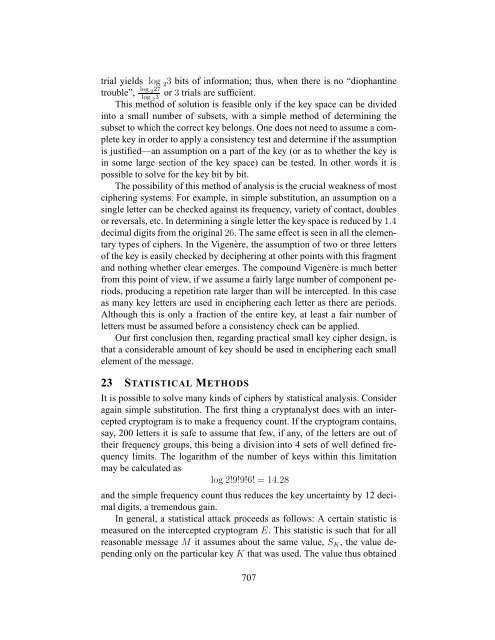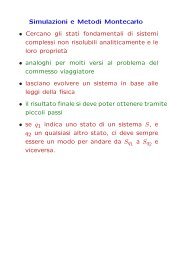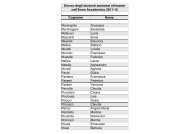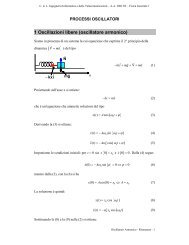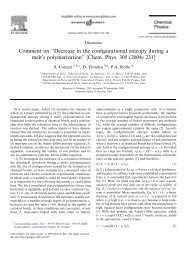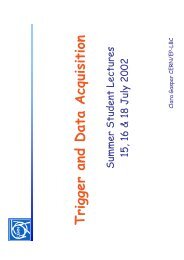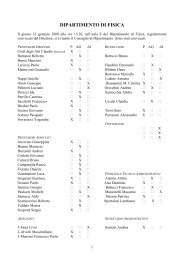Communication Theory of Secrecy Systems - Network Research Lab
Communication Theory of Secrecy Systems - Network Research Lab
Communication Theory of Secrecy Systems - Network Research Lab
You also want an ePaper? Increase the reach of your titles
YUMPU automatically turns print PDFs into web optimized ePapers that Google loves.
trial yields log 23 bits <strong>of</strong> information; thus, when there is no “diophantine<br />
log 227 trouble”, or 3 trials are sufficient.<br />
log 23 This method <strong>of</strong> solution is feasible only if the key space can be divided<br />
into a small number <strong>of</strong> subsets, with a simple method <strong>of</strong> determining the<br />
subset to which the correct key belongs. One does not need to assume a complete<br />
key in order to apply a consistency test and determine if the assumption<br />
is justified—an assumption on a part <strong>of</strong> the key (or as to whether the key is<br />
in some large section <strong>of</strong> the key space) can be tested. In other words it is<br />
possible to solve for the key bit by bit.<br />
The possibility <strong>of</strong> this method <strong>of</strong> analysis is the crucial weakness <strong>of</strong> most<br />
ciphering systems. For example, in simple substitution, an assumption on a<br />
single letter can be checked against its frequency, variety <strong>of</strong> contact, doubles<br />
or reversals, etc. In determining a single letter the key space is reduced by 1.4<br />
decimal digits from the original 26. The same effect is seen in all the elementary<br />
types <strong>of</strong> ciphers. In the Vigenère, the assumption <strong>of</strong> two or three letters<br />
<strong>of</strong> the key is easily checked by deciphering at other points with this fragment<br />
and nothing whether clear emerges. The compound Vigenère is much better<br />
from this point <strong>of</strong> view, if we assume a fairly large number <strong>of</strong> component periods,<br />
producing a repetition rate larger than will be intercepted. In this case<br />
as many key letters are used in enciphering each letter as there are periods.<br />
Although this is only a fraction <strong>of</strong> the entire key, at least a fair number <strong>of</strong><br />
letters must be assumed before a consistency check can be applied.<br />
Our first conclusion then, regarding practical small key cipher design, is<br />
that a considerable amount <strong>of</strong> key should be used in enciphering each small<br />
element <strong>of</strong> the message.<br />
23 STATISTICAL METHODS<br />
It is possible to solve many kinds <strong>of</strong> ciphers by statistical analysis. Consider<br />
again simple substitution. The first thing a cryptanalyst does with an intercepted<br />
cryptogram is to make a frequency count. If the cryptogram contains,<br />
say, 200 letters it is safe to assume that few, if any, <strong>of</strong> the letters are out <strong>of</strong><br />
their frequency groups, this being a division into 4 sets <strong>of</strong> well defined frequency<br />
limits. The logarithm <strong>of</strong> the number <strong>of</strong> keys within this limitation<br />
may be calculated as<br />
log 2!9!9!6! = 14.28<br />
and the simple frequency count thus reduces the key uncertainty by 12 decimal<br />
digits, a tremendous gain.<br />
In general, a statistical attack proceeds as follows: A certain statistic is<br />
measured on the intercepted cryptogram E. This statistic is such that for all<br />
reasonable message M it assumes about the same value, SK, the value depending<br />
only on the particular key K that was used. The value thus obtained<br />
707


